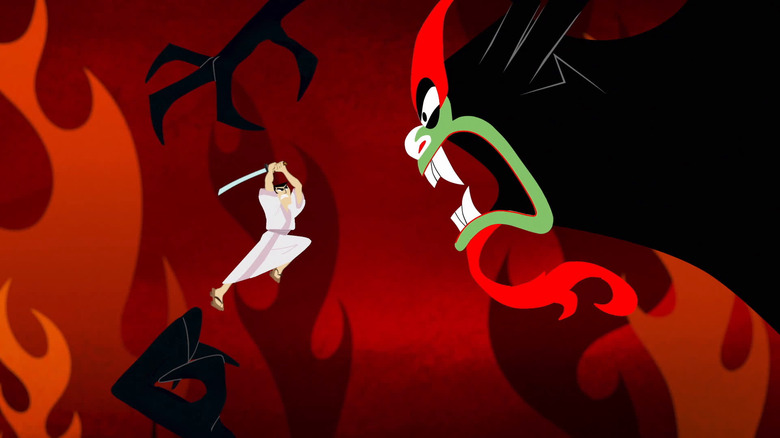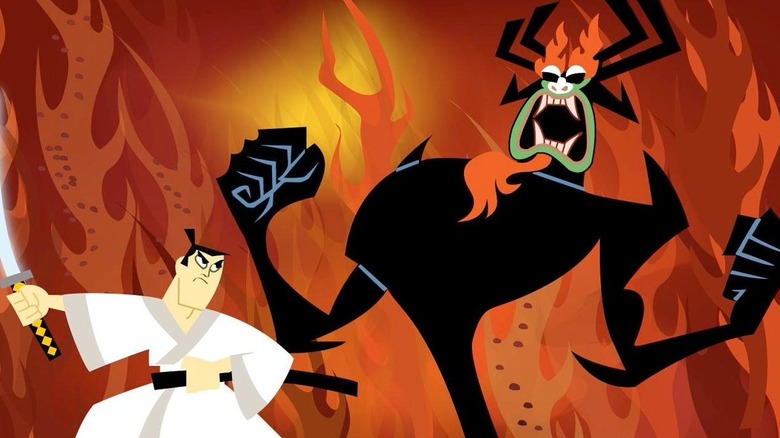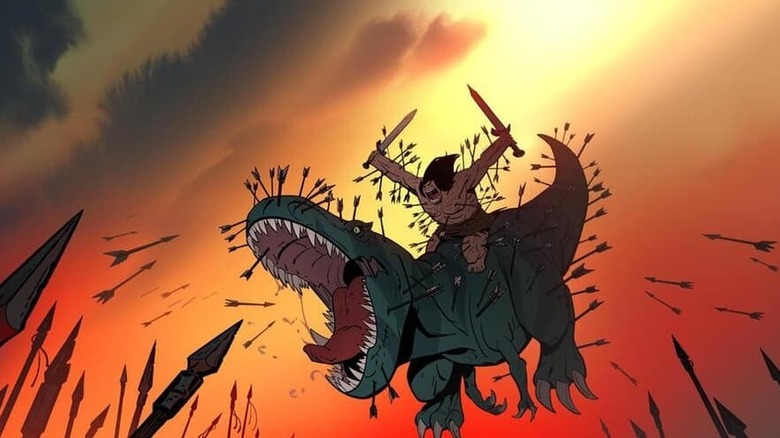Only one cartoon is on the list of the five best TV shows of all time, according to IMDb. On Metacritic, however, things are different. Rather than being based on user scores (which are notoriously vulnerable and prone to review bombing and other forms of bias), Metacritic bases its ratings mostly on review scores — but not just an arbitrary fresh/rotten, an actual score. This means these are actually the cartoons that have the highest review scores, the ones considered close to perfect.
Advertisement
Granted, there are still many problems with any sort of list coming from a review aggregator, starting with the limited number of reviews for older titles from before the era of movie and TV blogs. If there are only a handful of reviews, but they are all rated highly, does that weigh more than a modern show with a slightly lower score but exponentially more reviews?
In any case, the Metacritic list of highest-rated animated shows is a fascinating collection of rather unusual suspects, even a couple of shows you normally wouldn’t even think of as traditional cartoons.
The absolute, undisputed, highest-rated animated TV show of all time, according to Metacritic, is Genndy Tartakovsky’s “Samurai Jack.” The animating legend has not one, but two shows in the top 5, as the second highest-rated cartoon is Tartakovsky’s “Primal.” On the third spot is the American cultural institution “The Simpsons,” followed by the rotoscope gem “Undone” and finally one of the best video game adaptations of all time in “Arcane” as number 5 — curiously, the sixth spot goes to the documentary series “Prehistoric Planet” which is technically animated, but not often considered as a cartoon.
Advertisement
Samurai Jack is a cartoon like no other
Genndy Tartakovsky is an american animation treasure. He had already made a huge splash with “Dexter’s Laboratory,” the first Cartoon Cartoon, a show that changed the course of American TV animation forever, and was a wonderful blend of Tex Avery comedic sensibilities, anime imagery, Sam Raimi references, and much more. But it was with “Samurai Jack” (which has an incredible 93 Metascore) that Tartakovsky made his masterpiece.
Advertisement
The show was unlike anything else on TV. The story of a samurai time-traveling to prevent a shapeshifting demon from taking over the world was as if Akira Kurosawa made a sci-fi cartoon. The titular Jack even feels like a character out of a Kurosawa movie, stoic and unmoving, yet still incredibly complex and emotive. The limitations of network broadcasts meant the show had to be episodic, and Jack couldn’t emote much. This allowed “Samurai Jack” to explore a myriad of genres, tones, and stories. Jack’s unchanging demeanor also speaks volumes as to his resolve. By the time we got to the revival, however, that resolve and unwavering will turned into despair, and Tartakovsky produced some of the best storytelling on television regardless of medium.
Advertisement
One of the strengths of “Samurai Jack” was that, in addition to great humor and truly stunning and kinetic action, this was a show that knew when to let things breathe. Tartakovsky is a student of all kinds of animation, but he’s often talked about being inspired by Bob Clampett, Tex Avery, and Chuck Jones, who often let the physicality of the story do the talking and told stories with little to no dialogue. “There’s too much dialogue on animated shows nowadays, and I try to stand out by forcing you to pay attention through silence,” the animator said to Rotten Tomatoes in 2019. “Samurai Jack” is full of quieter moments, long stretches devoid of dialogue that just lets the characters reflect on the story, an unusual level of introspection in American cartoons. Add the relentless, often brutal action of the “Samurai Jack” revival, and you have the ingredients for Tartakovsky’s second masterpiece — “Primal: Tales of Savagery.”
Primal is Tartakovsky unleashed
“Primal” is, in many ways, a spiritual successor to the ideas and the craft Tartakovsky explored in “Samurai Jack.” The 91 Metascore reflects just how unlike anything else this show is. Tartskovsky made his emotionally devastating, visually raging magnum opus that is completely devoid of dialogue — and when there is, it’s in an ancient language that is never translated for the audience — that lets both emotional scenes and action scenes breathe in order to build anticipation. The show also uses sound design and the score in order to give the action sequences a sense of rhythm.
Advertisement
But what makes “Primal” stand out as the evolution of Tartakovsky’s career is the heightened savagery of the action and how it goes hand in hand with the emotions. Though there have been action scenes and emotional scenes in his cartoons before, they were never blended as well as they are in “Primal,” a show that telegraphs to the audience constantly that every brutal and gnarly fight is born out of a necessity to survive in a cruel, savage world. Every fight, no matter how thrilling, comes with a sense of sadness and grief for whoever loses. The show accompanies these fight scenes with dramatic music rather than rousing, exciting music. It makes the action tragic, like the first encounter between Fang and Spear.
Advertisement
But it is also a show that, like “Samurai Jack,” like “Dexter’s Laboratory” and “Sym-Bionic Titan,” knows when to just show the weirdest, craziest stuff possible. From a caveman riding a dinosaur into battle, to zombies, to a massive floating ship with a pyramid on top, “Primal” never deescalates, but constantly introduces bigger, bolder ideas. It’s what makes Tartakovsky one of the best to ever do it, and his shows are the highest-rated cartoons ever.






:max_bytes(150000):strip_icc():format(jpeg)/TAL-hanalei-bay-kauai-hawaii-HISUSTNBLTAX0525-9684b67bff194bbdbd1ecd0b8252b412.jpg?w=150&resize=150,150&ssl=1)




